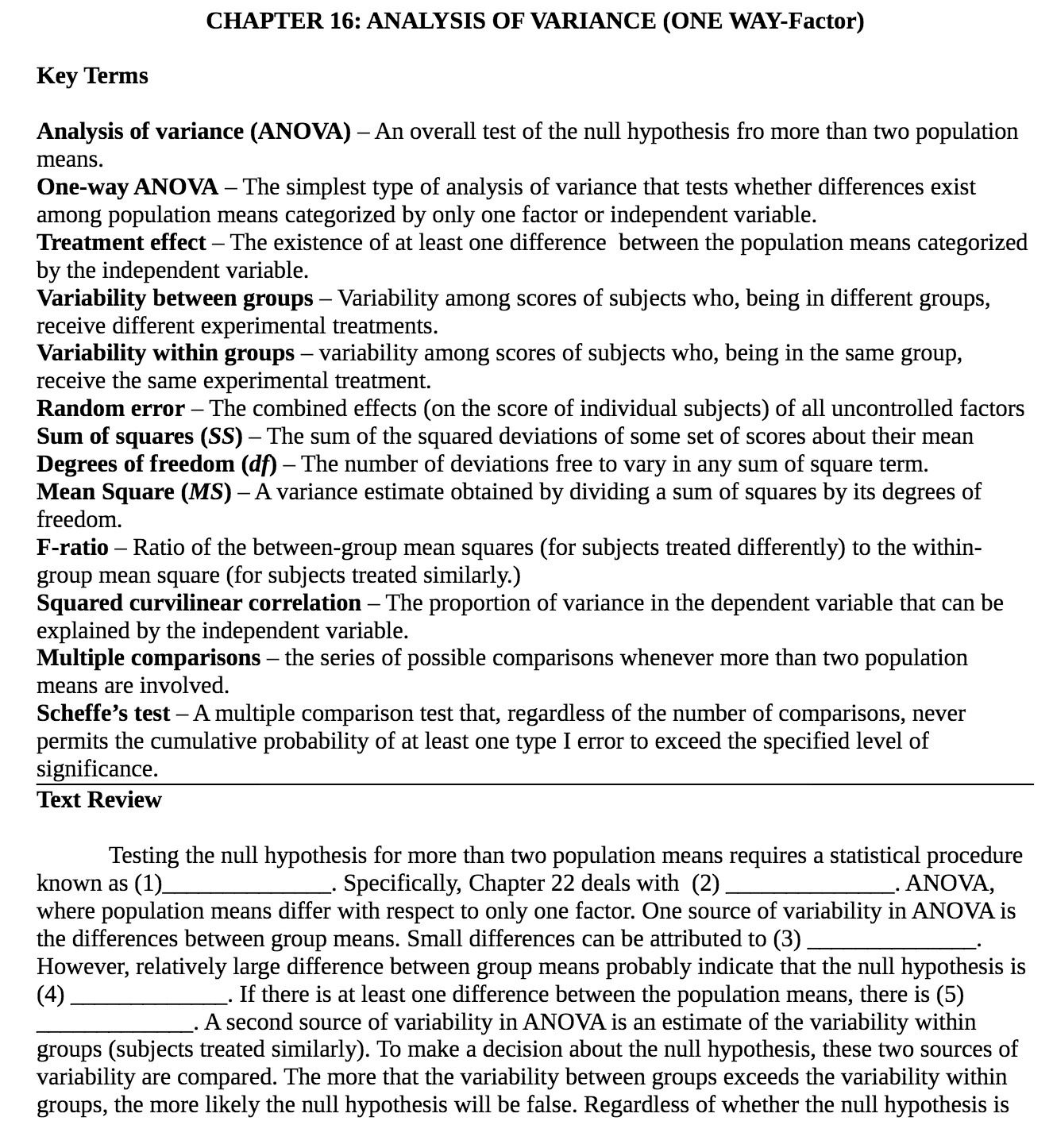CHAPTER 16: ANALYSIS OF VARIANCE (ONE WAY-Factor) Key Terms Analysis of variance (AN OVA) An overall test of the null hypothesis fro more than two population means. One-way AN OVA The simplest type of analysis of variance that tests whether differences exist among population means categorized by only one factor or independent variable. Treatment effect The existence of at least one difference between the population means categorized by the independent variable. Variability between groups Variability among scores of subjects who, being in different groups, receive different experimental treatments. Variability within groups variability among scores of subjects who, being in the same group, receive the same experimental treatment. Random error The combined effects (on the score of individual subjects) of all uncontrolled factors Sum of squares (SS) The sum of the squared deviations of some set of scores about their mean Degrees of freedom (df) The number of deviations free to vary in any sum of square term. Mean Square (MS) A variance estimate obtained by dividing a sum of squares by its degrees of freedom. F-ratio Ratio of the between-group mean squares (for subjects treated differently) to the within- group mean square (for subjects treated similarly.) Squared curvilinear correlation The proportion of variance in the dependent variable that can be explained by the independent variable. Multiple comparisons the series of possible comparisons whenever more than two population means are involved. Scheffe's test A multiple comparison test that, regardless of the number of comparisons, never permits the cumulative probability of at least one type I error to exceed the specified level of significance. Thxt Review Testing the null hypothesis for more than two population means requires a statistical procedure known as (1) . Specifically, Chapter 22 deals with (2) .ANOVA, where population means differ with respect to only one factor. One source of variability in ANOVA is the differences between group means. Small differences can be attributed to (3) However, relatively large difference between group means probably indicate that the null hypothesis IS (4) .If there 15 at least one difference between the population means, there 15 (5) . A second source of variability in AN OVA is an estimate of the variability within groups (subjects treated similarly). To make a decision about the null hypothesis, these two sources of variability are compared. The more that the variability between groups exceeds the variability within groups, the more likely the null hypothesis will be false. Regardless of whether the null hypothesis is







